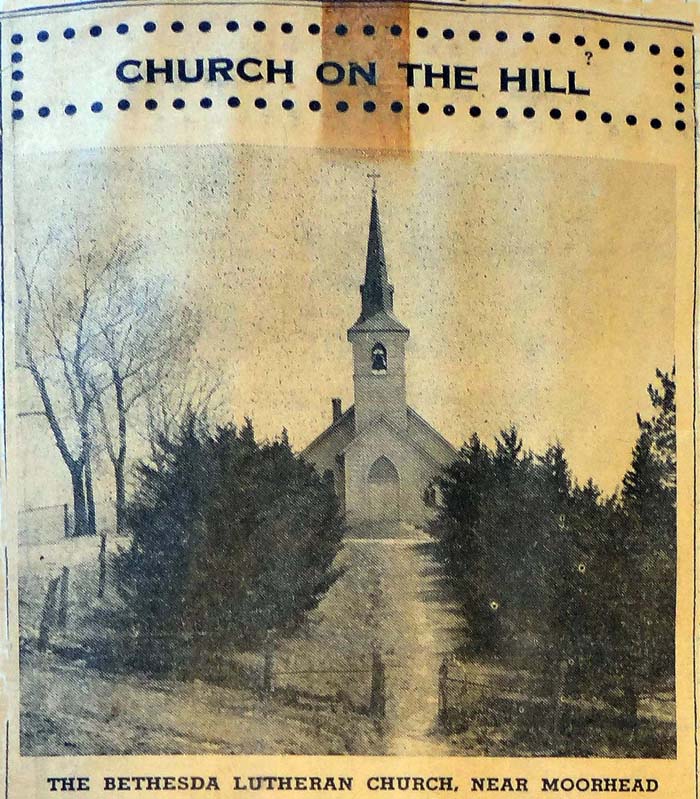| |
Bethesda Lutheran Church
THE CHURCH ON THE HILL
“From the eminence on which it is located, Bethesda Lutheran Church, four miles west of Moorhead, creates a picturesque scene and could be called the inspiration of our hill region. It has served as an ideal motive for oil paintings and water colors; and amateur photographers have found it an acceptable subject. It is small in size, but very well proportioned and its slender lines blend beautifully with the extremely hilly country of wooded slopes and fruitful valleys.
Bethesda Lutheran church was built in 1897 by members of the congregation, under the leadership of N.C. Bang, carpenter and church builder, of Spencer, Iowa.
The building resembles the architecture of the European churches, more specifically the Danish country churches. It stands as a tribute to the fatherland from which the pioneers of the community emigrated, and its clear cut Gothic style refers back to the 13th century.
The interior, redecorated in 1940, bears witness of delicacy and esthetic taste, and marks it with moderate churlishness, an atmosphere proper for the House of Worship.
The Rev. K.M. Ludvigsen, occupies the pulpit, and together with the devoted congregation, seeks to further the cause of God's Kingdom in the community from their little church on the hill.
THE CHURCH ON THE HILL
Woodlands gently clothe the hillside;
And, Behold! The plains below.
Beyond where day and night divide,
The sun is sinking low.
Winding 'long the country roadway,
'neath the branches bending low,--
Could we but bid the sun delay
With Heave and earth aglow!
Here the summitas view the hilltops--
Passing o'er the ridge road drives--
In pointing us to greater tops,
A steeple spire arrives.
Gothic beauty poised in silence
Wrapped, and lit by heavenly fire
Serenely speaks of Providence
And stirs the soul's desire
Sunday bells and vesper tolling
Turn the heart to worship still;
With prayer and praise, we're entering
“The Church upon the Hill”
---Carl Marenti.
|
|
